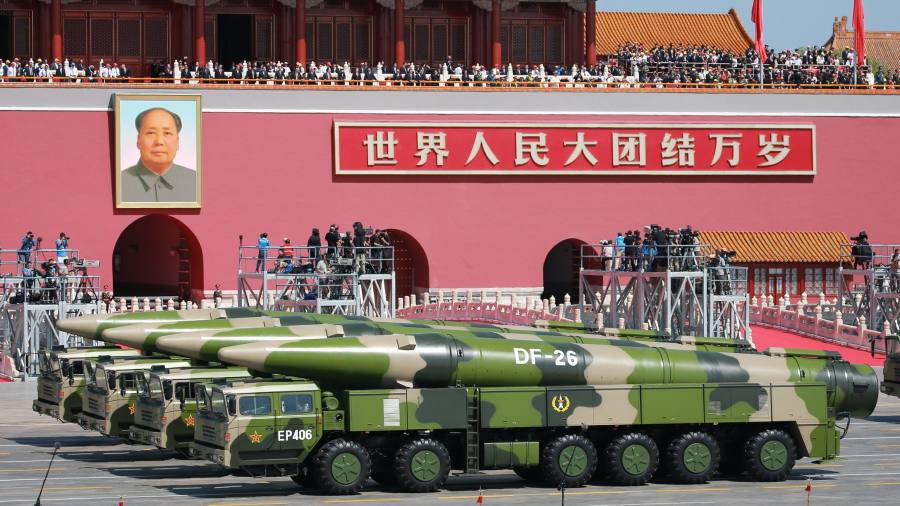
Receive free Taiwan updates
We’ll send you a myFT Daily Digest email rounding up the latest Taiwan news every morning.
Taiwan has rejected China’s claim that it could easily sink the US Navy’s most advanced aircraft carrier strike group, as Taipei seeks to strengthen public confidence and fight back against a persistent Chinese intimidation campaign.
In a paper published in May, researchers at the People’s Liberation Army-backed North University of China said a war game had shown that an attack with 24 hypersonic anti-ship missiles would sink a flotilla led by the USS Gerald R Ford “with certainty”.
The findings marked the first time a Chinese simulation of hypersonic strikes on a US aircraft carrier was made public. The simulation used Dongfeng-20 and Dongfeng-26 ballistic missiles, known as “carrier killers” because they are designed to target naval vessels on the move.
Taiwanese national security officials have dismissed the findings, which were reported by Chinese and Hong Kong media and later picked up by some Taiwanese news outlets, as part of a Chinese cognitive warfare campaign. Taiwanese military war game experts said replications of the simulation with realistic parameters led to drastically different results.
The dispute over the war games highlights concerns among President Tsai Ing-wen’s administration that China’s increasing military manoeuvres near Taiwan, paired with a disinformation campaign, will stoke fears of war and undermine the country’s will to defend itself.
China claims Taiwan as part of its territory and has threatened to annex it with military force if Taipei resists indefinitely. Beijing has stepped up air and naval drills around the island, increased fighter incursions across the unofficial Taiwan Strait median line and staged bomber and drone circumnavigations of the island.
Chinese authorities have also used traditional and social media outlets to ridicule Taiwan’s military and cast next year’s presidential elections as a choice between peace and war.
Taiwan’s intelligence chief Tsai Ming-yen pushed back this week, saying in an interview that China’s behaviour should be seen as “intimidation rather than aggression”.
Lin Chuan-kai, a veteran war game expert at the defence ministry’s Institute for National Defense and Security Research, said that when the think-tank replicated the North University of China war game, on average only 2.2 of the six ships in the US Navy carrier strike group were sunk, rather than the 5.6 reported by the Chinese researchers.
“They got the result that they can finish off pretty much the entire carrier strike group, but our results showed they would only do marginal damage. We were curious how the difference could be that stark,” Lin said.
The institute found that the Chinese missiles would only sink most of the US flotilla when the ships stopped moving, the hit ratio for their air defence missile systems was set artificially low and the carrier’s other weapons — such as electronic interference and decoy systems to exhaust attacking warheads — were switched off.
“Only if the simulation is conducted under the most extreme parameters will it turn up those results reported in the Chinese paper, so the credibility is questionable,” Lin said in a presentation to reporters on Wednesday.
“[China] has already started their usual cognitive warfare campaign as they do every time ahead of Han Kuang,” a senior national security official said, referring to Taiwan’s largest annual live-fire military exercise, which is scheduled for the last week of July.
“They will increase the disinformation even more the closer we get to the [January 2024] presidential election.”
Cao Hongsong, the author of the Chinese war game paper, did not respond to an emailed request for comment.